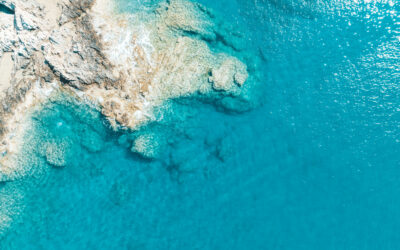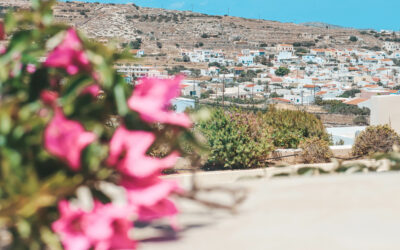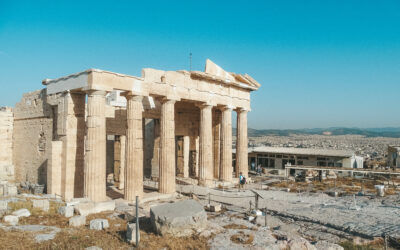The Meltemi winds in Greece are a fascinating natural phenomenon that might have an impact on your vacation in Greece. These powerful, dry north winds play an important role in the Aegean region, providing a one-of-a-kind environment for both locals and visitors. In this article, we’ll go over the Meltemi winds and which islands are affected (and which aren’t), as well as some recommendations for enjoying a windy day in Greece.
What are the Meltemi winds?
Meltemi winds, also known as etesian winds, are strong, dry, and frequently gusty winds that blow in the Aegean Sea region, especially during the summer months. The term “Meltemi” is derived from the Greek phrase “meltem,” which means “seasonal wind.” These winds are a regional weather phenomenon that is mostly linked with the Greek islands, Turkey, and areas of the Mediterranean coast. Meltemi winds are distinguished by their severity and constancy, and they often blow from the north or northwest.
What is the cause of the Meltemi wind?
The main cause of this wind is a pressure difference between two weather systems: one over the Balkans and one over the eastern Mediterranean.
During the summer, the eastern Mediterranean becomes extremely hot, resulting in a low-pressure zone. Simultaneously, the Balkans region remains relatively chilly and develops a high-pressure zone. Because air naturally travels from high to low-pressure areas, it accelerates through the Aegean Sea, causing the Meltemi wind.
The Meltemi wind is influenced by the shape of the land and sea in this location. The wind is influenced by the location of mountains and beaches. These geological features might cause the wind to become stronger and faster as it passes.
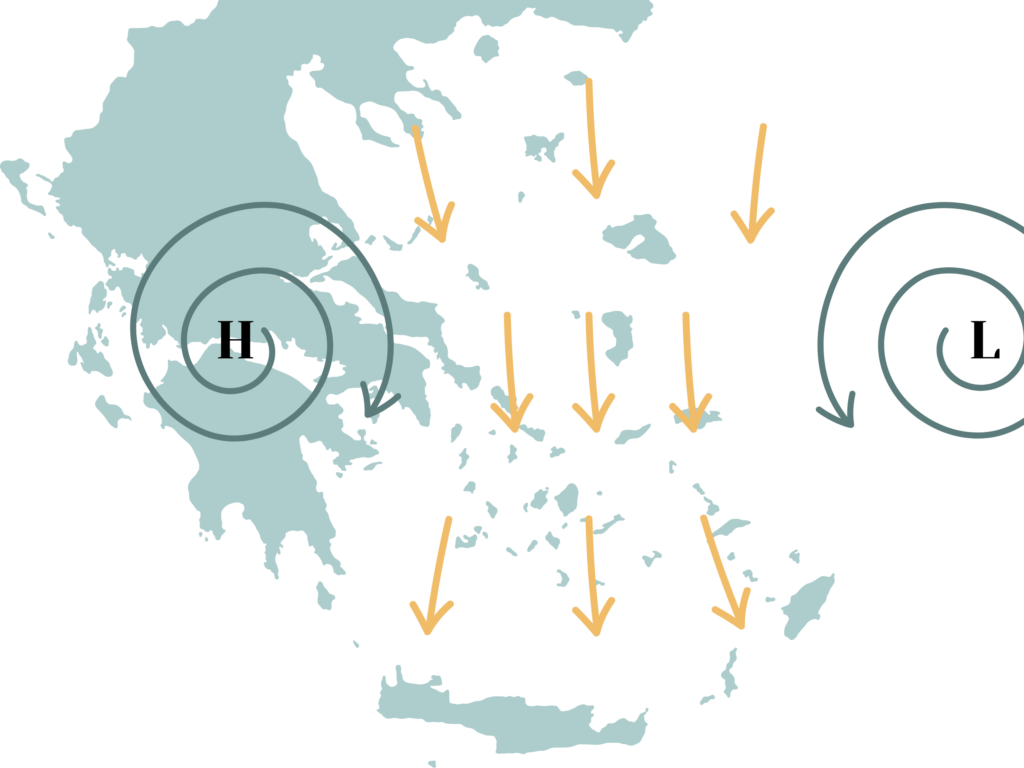
When do the Meltemi winds occur?
Meltemi winds usually occur throughout the summer months, beginning in late May and lasting until September. However, they are most common in July and August, when their intensity is at its highest.
So, if you want to go windsurfing on one of the Greek islands. The best months for a good amount of wind are July and August.
How long do Meltemi winds last?
Who knows? Meltemi winds may last for a number of days, and in extreme cases, up to two weeks. Their duration varies based on a variety of circumstances, including pressure system strength and local geography.
To be honest, we enjoy the wind, even if it can drive us insane at sometimes. We live in the windiest part of Karpathos, therefore we don’t need air conditioning, have fewer insects, and it is comfortable on a hot summer day when temperatures are around 35-40 when there’s no wind.

How strong are the Meltemi winds?
The Meltemi wind is notable for its powerful gusts and can reach average speeds of 7 to 9 on the Beaufort scale. It brings cool air to coastal locations, which is particularly enjoyed by sailors and those who enjoy water sports in the Aegean Sea.
We live on the island of Karpathos, and the Meltemi can be quite serious in July and August. This is one of the reasons why Karpathos is one of the world’s most recognized windsurfing destinations. Because of the strong winds during the high season, islands such as Kos and Rhodes are also well-known for windsurfing. However, it is dependent on which side of the island you are on! So, if you’re visiting one of the islands and don’t like the wind, just go to the other side. There will be more on this later in the post.
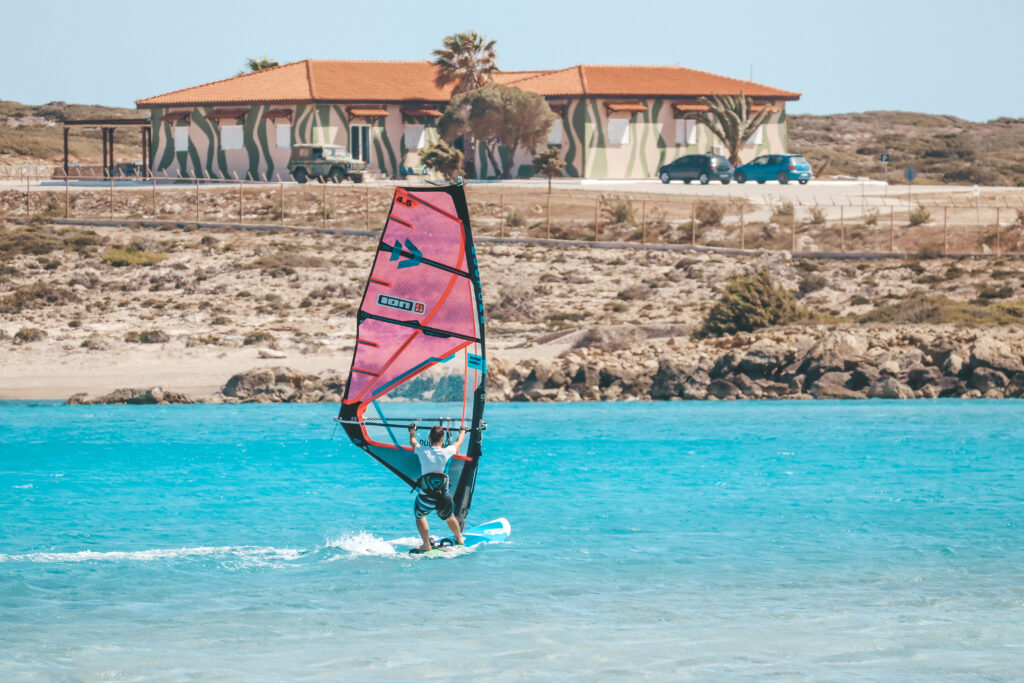
Which Greek islands are least affected by the Meltemi winds?
While the Meltemi winds strike the majority of Greek islands, due to their geographical location, others are less affected. Ionian Sea islands such as Corfu, Lefkada, Kefalonia, and Zakynthos are often less influenced by the Meltemi winds than other islands.
Which Greek islands are the most affected by the Meltemi winds?
The Cyclades and Dodecanese islands, which include famous destinations for tourists such as Mykonos, Santorini, and Rhodes, are particularly subjected to the Meltemi winds. Because of their proximity to the open Aegean Sea, these islands experience stronger and more consistent Meltemi winds.
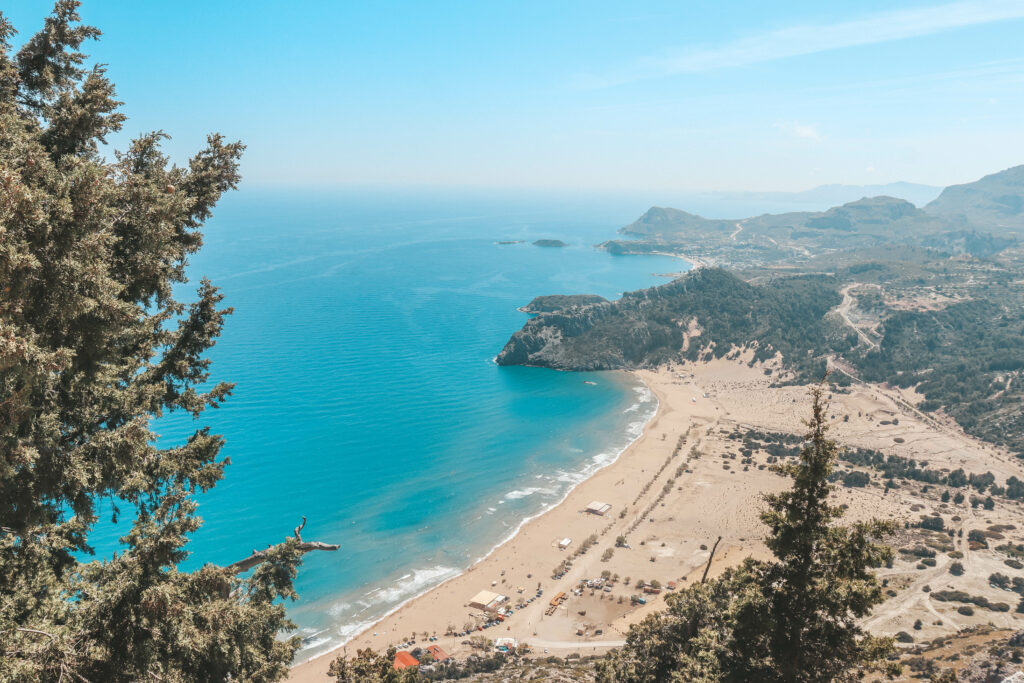
Tips to survive your days in Greece when it’s windy
- Seek sheltered areas: the winds are usually strong on one side of the island so visit the other side! For example on Karpathos the South part (near the airport in Afiartis) is windy. Places with no wind are usually Pigadia, Amoopi or one of the beaches above Pigadia: Ahata, Kyra Panagia and Apella. For Rhodes: the Westside is usually windy (Ixia) and less wind can be found on the East side (Lindos, Faliraki).
- Dress appropriately: always bring a sweater to Greece. The wind can make it chilly during the evening. And for the girls with flowy dresses: consider wearing biker shorts underneath
- Plan outdoor activities accordingly: If you have specific plans for outdoor activities, such as boat trips or beach visits, check the weather forecast and choose calmer days if possible. We love to use this Windy app, which is very precise.
- Embrace the winds: Instead of fighting against the wind, embrace it and enjoy activities like windsurfing or kiteboarding!





